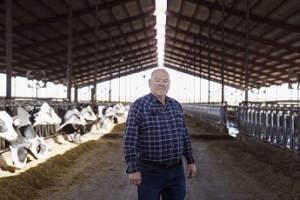Dairy in the World
Is the Great Financial Reset Now Underway?

One major bright spot in 2022 is domestic dairy demand, which is on a record pace. During Farm Journal's Milk Business Conference (MBC) this week in Las Vegas, it was clear it’s now a question on if inflation and higher dairy prices at the store will eat into consumers shopping decisions in 2023. “I think the cost of everything, and of course, water issues are huge in California,” says Arlene Vander Eyk, a dairy farmer in Pixley, California.
It’s not just dairy products seeing the impact of inflation. Dairy farmers from across the country are wading through the reality of higher feed prices, input prices and inflation across the board.
“Inflation has reached a zenith, it did so back in March. It's now coming down,” says Dan Basse, president AgResource Company. “The question is, ‘How far will it fall in 2023? And what's the new natural rate of inflation?’ Back in the last 10 years, it was somewhere around 1.4%. We now think it's closer to 3% to 3.5%, meaning that interest rates are going to be staying higher.”
The Consumer Price Index (CPI) this week showed a positive sign and the rate of inflation is slowing. In the 12 months through November, the CPI climbed 7.1% which was the smallest advance since December 2021, and followed a 7.7% rise in October.
The annual CPI peaked at 9.1% in June, which was the largest increase since November 1981.
However, inflation remains above the Fed's 2% target. And as the Fed make a decision on more rate hikes in 2023, Basse is dubbing it the “Great Reset,” and one that he says is costing farmers more money on nearly every corner of the farm.
“If you look at seventh district data for the Kansas City Fed, this is the big farm states and the I-States in the middle of the country, they are now looking at operational loan costs being around 6.8%,” says Basse. “If you needed to borrow money to buy farmland, it's about 6.5%. This is up about three percentage points from last year substantially. And so, whatever your interest rates costs were last year, it's going to be double.”
Basse thinks interest rates could increase again early next year. With the Fed Rate hike this week, he thinks two more could be coming in 2023.
“The great financial reset is happening where interest rates are rising,” says Basse. “There's a new asset class called cash. And as we look forward, I think that reset will have a big impact on recall repricing assets, not so much farmland but equities and lots of other things and farmers need to be aware of that,” Basse says.
Farm Journal’s Washington correspondent, Jim Wiesemeyer, says he’s more concerned about 2024 than 2023 in terms of the great financial reset and impact on agriculture.
“Later in 2023, I think you'll see some of the pressures start, because as the carryover from relatively firm prices, this past year play out and some of these ad hoc disaster payments are spent and other foreign program payments. So yeah, 2024 could be some crunch times. It has to be cash flow, your cash flow is your predominant and cutting costs,” Wiesemeyer says.























